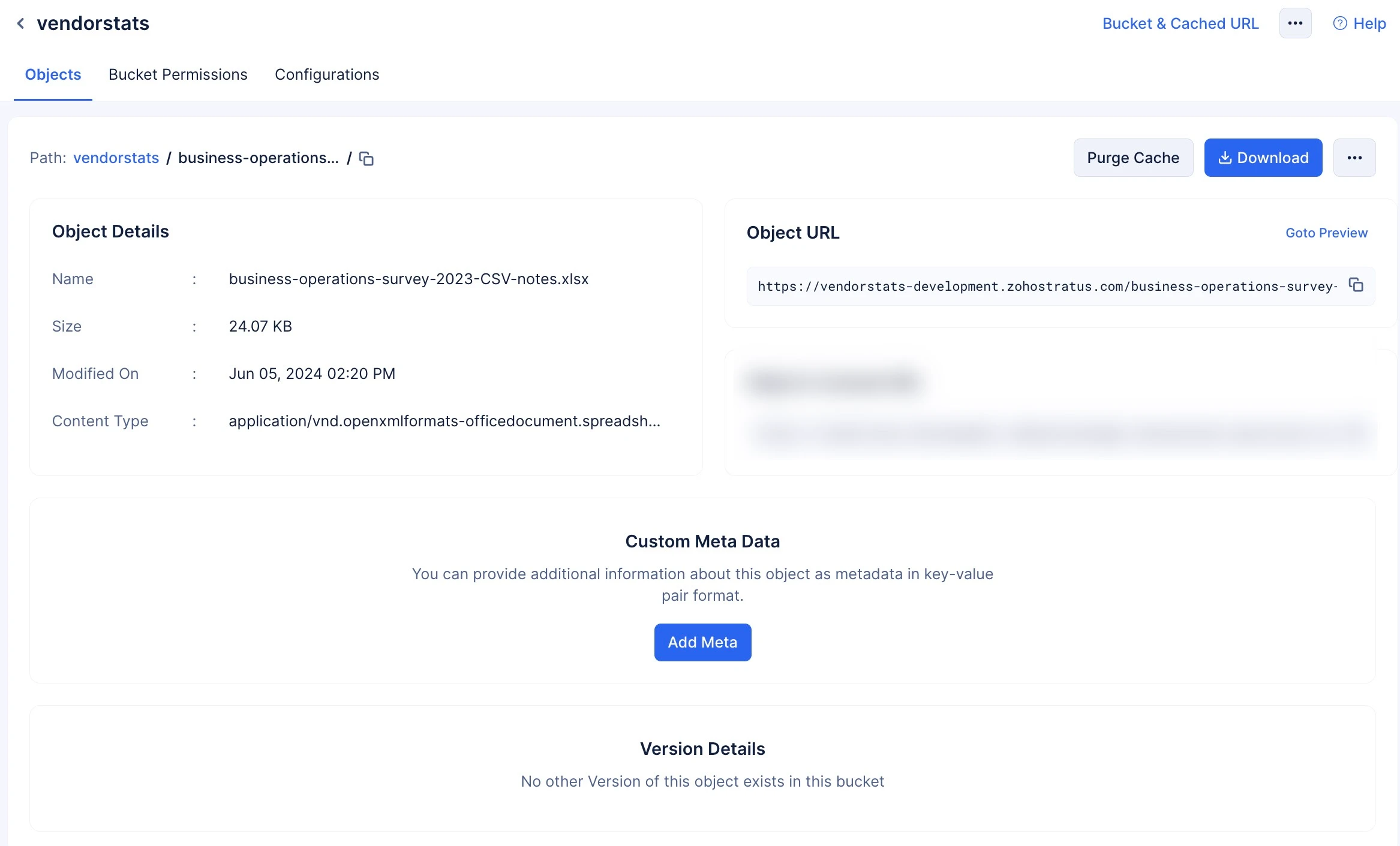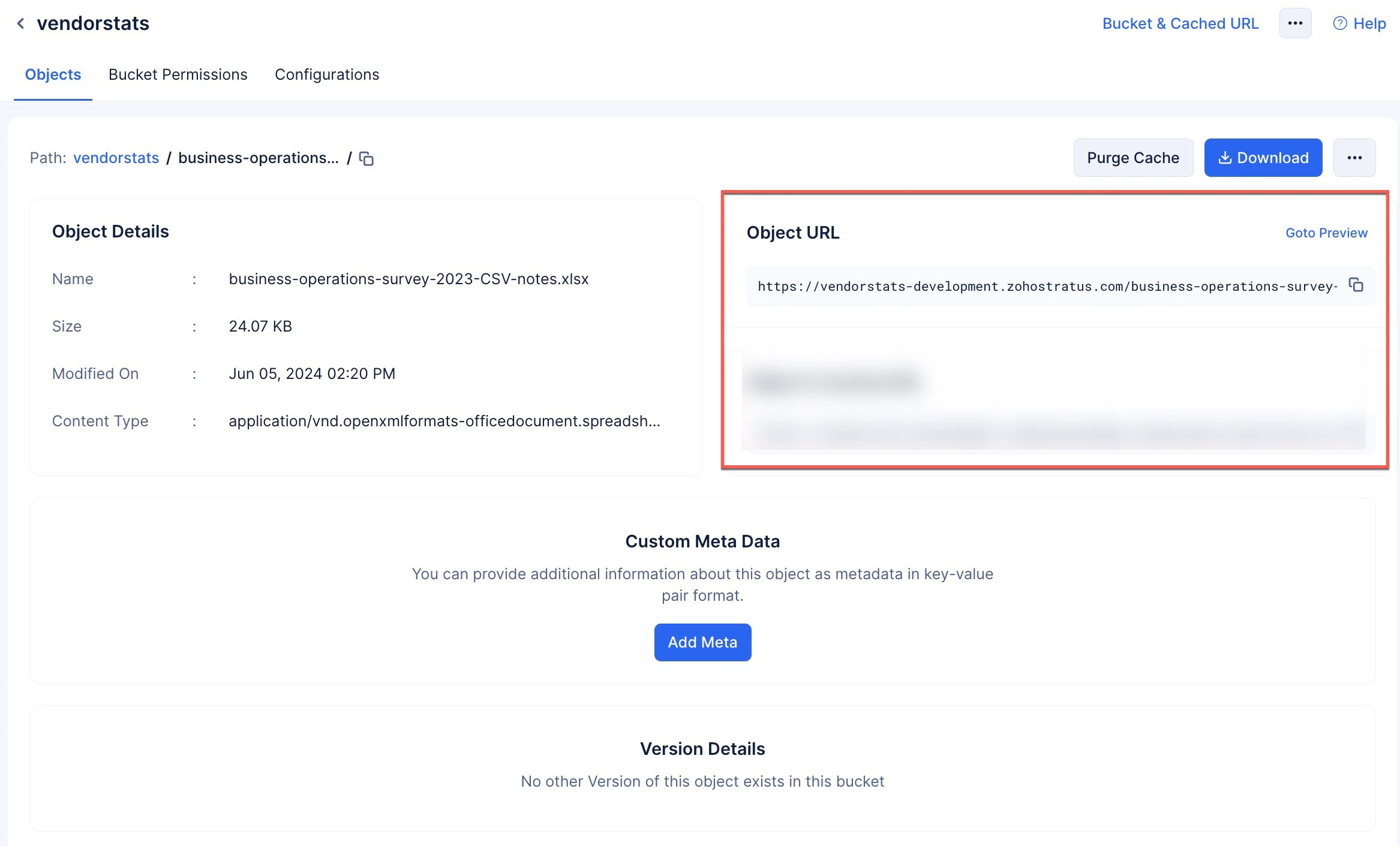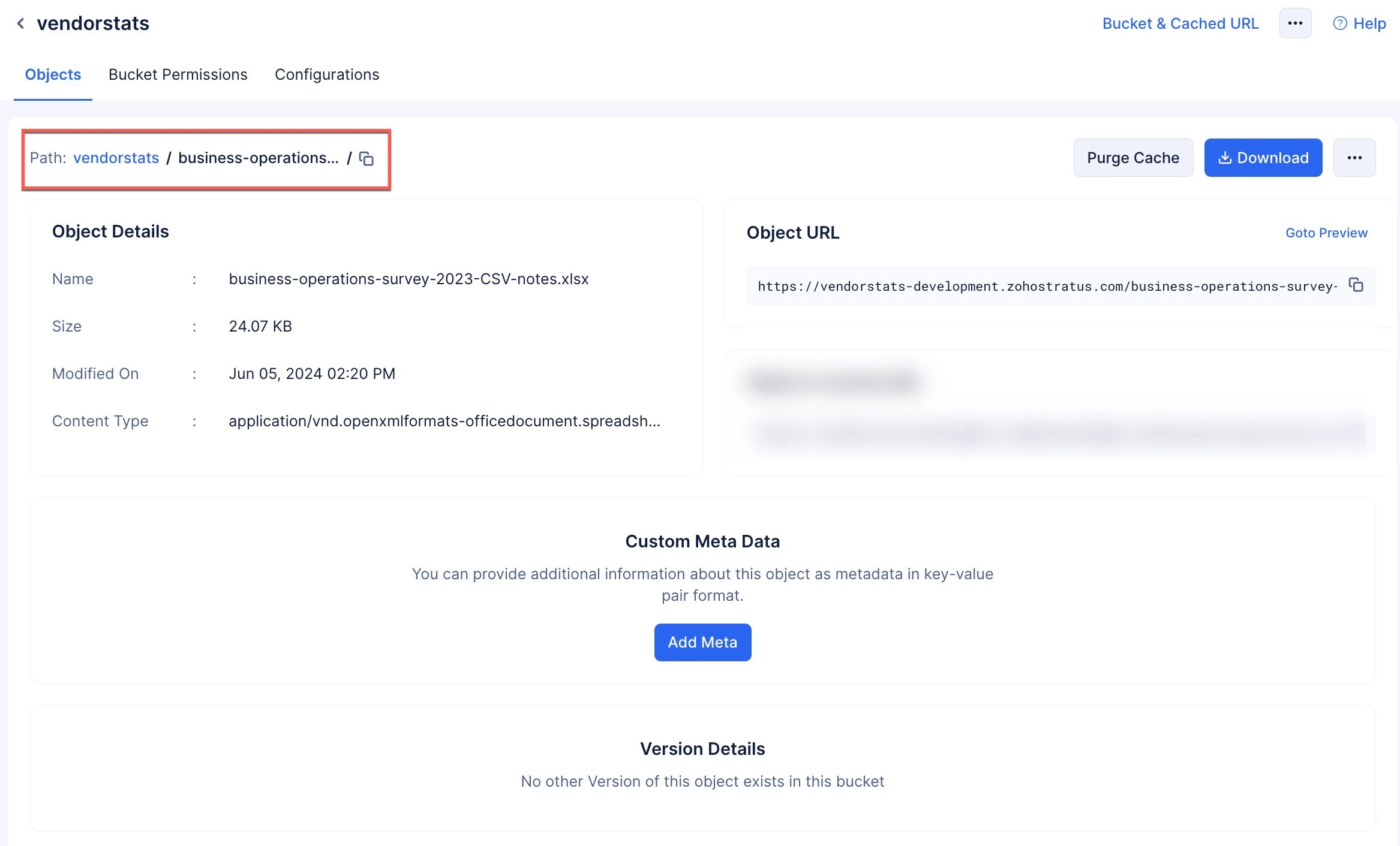Objects
Objects are the data you store in buckets. Objects can be of any format type, and each of them can be accessed using an Object URL generated by Stratus.
Object URL
This is a unique URL generated by Stratus to uniquely identify and securely access the object you upload to a bucket.
If you have enabled Versioning for your bucket, then you can access each version of the object by using query params in the Object URL in a key value format. versionId being the key and the value being the string value generated by Stratus when you upload version of the object.
The Object URL will be in the following formats:
-
In development environment:
https://<bucket-name>-development.zohostratus.com/<object-name>For example: https://mappedsample-development.zohostratus.com/Archive.zip
-
In production environment:
https://<bucket-name>.zohostratus.com/<object-name>For example: https://mappedsample.zohostratus.com/Archive.zip
-
With Versioning enabled:
https://<bucket-name>-development.zohostratus.com/<object-name>?versionid={versionid}For example: https://mappedsample-development.zohostratus.com/Archive.zip?versionid=1233487326
Path
Path is the location of an object in the bucket. When you create a bucket and upload objects in it, their path is created in the standard directory format.
For example, imagine you create a bucket named “MyPictures”. You can either create sub-paths in the bucket and store the objects in them, or directly store the objects. In this example, there is a sub-path with the name “puppies”, and this path has an object named “border_collie.jpeg”.
The object is stored in the following path:
MyPictures/puppies/border_collie.jpeg
-
A path can never be empty. It will either contain further paths to hold objects, or objects itself.
-
The following characters including space are not supported when you create a path or an object: double quote, both angular brackets, hashtag, backward slash and pipe symbol.
-
The path name and the object name should not start with a space character or a special character.
Metadata
-
You can provide custom information about the object in key value pair format using the Metadata option.
-
You can use alphanumeric, underscores, or whitespace characters, as well as hyphens, to write your metadata. No other special character is allowed other than the once mentioned.
-
You can fetch the metadata of an object using the HEAD request method. In the response, the metadata will be listed in the key ‘x-user-meta’.
-
The maximum size limit of characters allowed for the overall metadata is 2047 characters. The character count used to determine the size limit also includes the colon “:” special character used to define the key value pair.
Last Updated 2025-07-02 15:43:56 +0530 IST
Yes
No
Send your feedback to us



